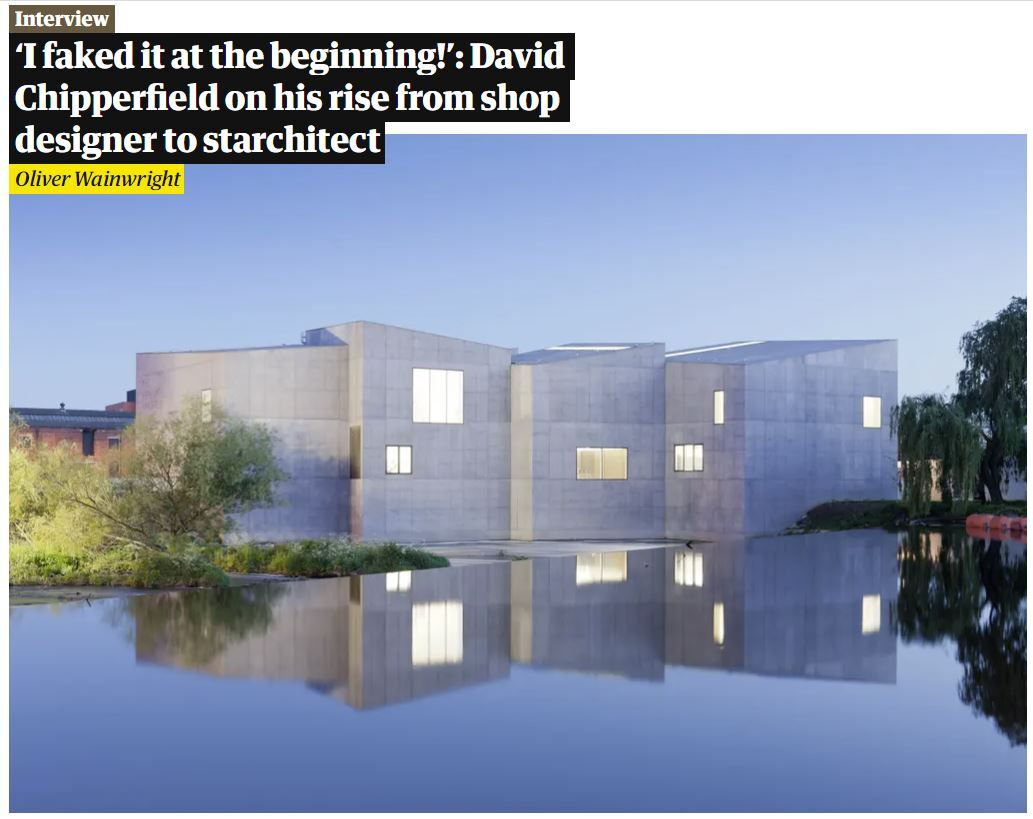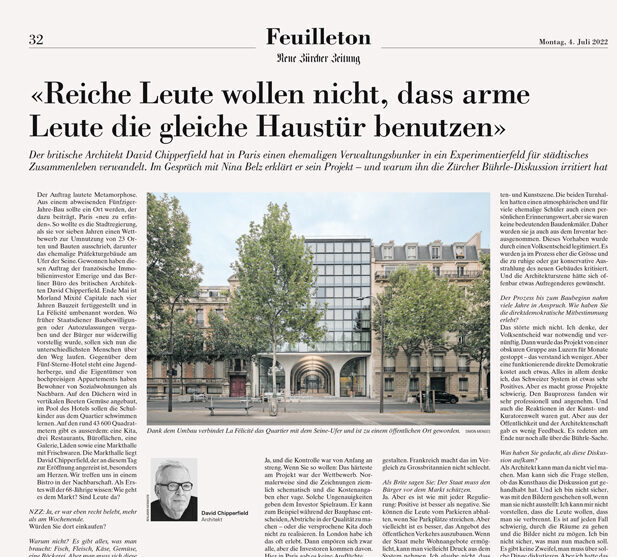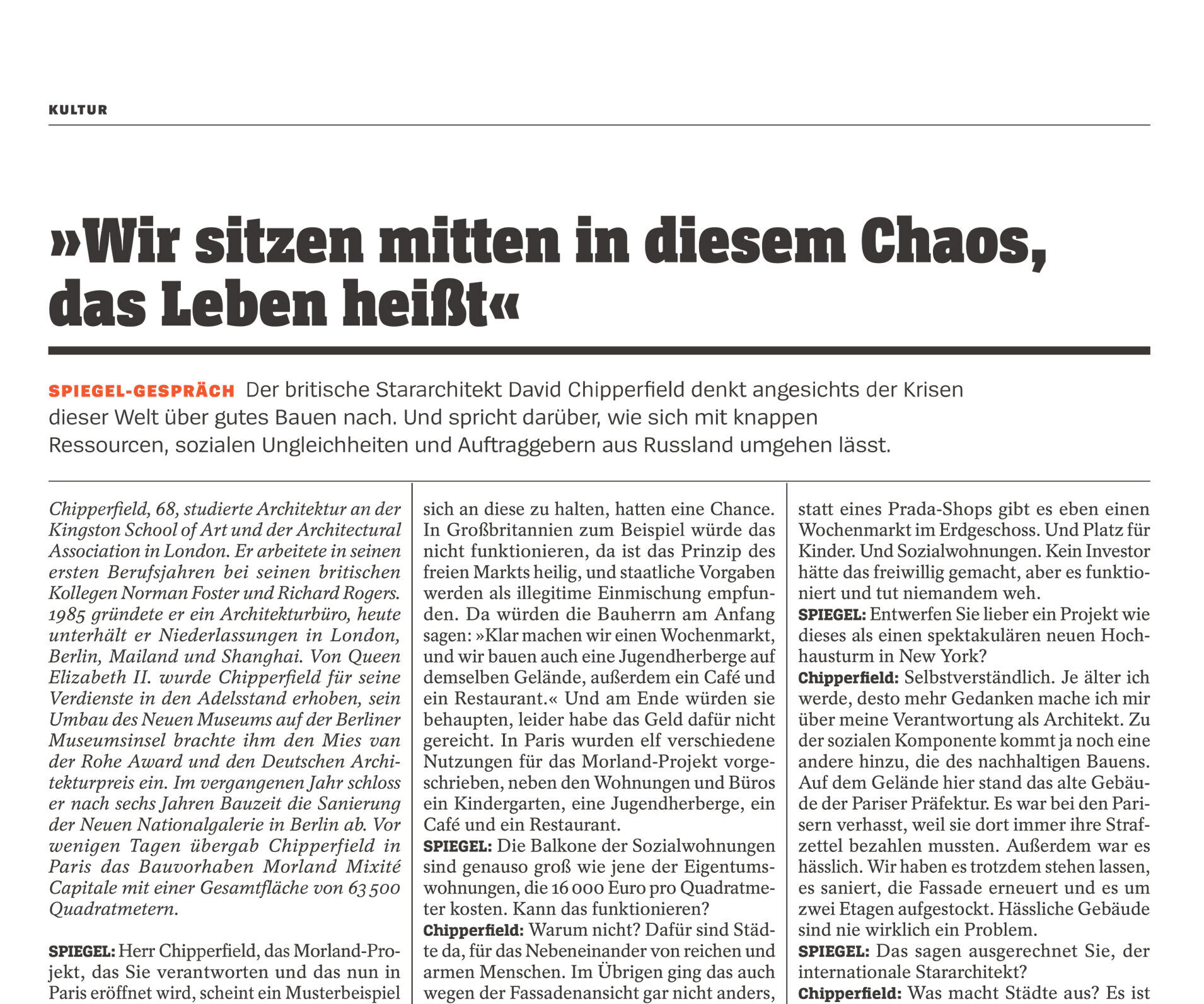He almost failed architecture school. Now heâs netted the professionâs top prize, the Pritzker. Britainâs modernist master talks about the building that changed everything â and running a bar in Spain
Sometimes, it takes a trip abroad to make you realise what you have at home. When David Cameron visited German chancellor Angela Merkel in 2013, she introduced the then British PM to âone of our most famous German architectsâ. The designer in question? The London-born and -based Sir David Chipperfield, who had built several museums in Germany, as well as law courts in Barcelona and a library in Des Moines, Iowa, all while being relatively overlooked in his native Britain.
Ten years on, Chipperfield has just been announced as the winner of the 2023 Pritzker prize, architectureâs highest international accolade. And he has become a bit better known back home. âItâs a great honour,â he says, speaking from his second home in Galicia, northwest Spain, where he spent much of the pandemic. âAnd also a slight relief.â
Although Chipperfield is firmly part of the architectural establishment, having won countless international competitions, curated the Venice Biennale and been awarded the Riba gold medal, he has always felt like an outsider. âAs a young architect in England in the 1980s, you had no chance,â he says. âWe had Margaret Thatcher and Prince Charles, the twin towers of negativity towards the architectural profession. I did my first three buildings in Japan, followed by competitions in Italy and Germany. To be honest, it hasnât really changed. Iâve been on the road ever since.â
While recent decades have seen globe-trotting celebrity âstarchitectsâ competing with ever more novel forms and contorted structural gymnastics, Chipperfield has been a voice of sobriety. While others conjured flashy icons, he pursued an austere form of modernism exuding solemn gravitas. As the Pritzker citation puts it, his buildings are âalways characterised by elegance, restraint, a sense of permanence and refined detailingâ, adding: âin an era of excessive commercialisation, over-designing, and over-exaggeration, he can always achieve balance.â
Chipperfieldâs brand of austerity can be too sterile for some: his projects in Germany have been accused of being too close to the countryâs fascist past. But he is at his masterful best when working with existing structures â particularly those with fraught histories. His career-defining project remains the beguiling reconstruction of the Neues Museum in Berlin, which had been bombed by the RAF during the second world war. Completed in 2009, the project eschewed both historical re-enactment and the cliched juxtaposition of ruins with a modern extension. Instead, Chipperfield developed a poetic archaeological approach, with conservation architect Julian Harrap, fusing fragments of the existing fabric with bold new insertions, sometimes making it hard to tell whose hand was at work.
âIt was life-changing for me and my team,â says Chipperfield. âIt was a PhD in process and how to truly collaborate. My generation has always been about the product, but I believe more than anything now that we need to focus on the process.â
Born in London in 1953, David Alan Chipperfield grew up on a farm in Devon and spent his childhood dreaming of becoming a vet. He attended Wellington boarding school, where he says he was âfairly hopeless academicallyâ but excelled at sports and art. He couldnât get into university so he went to Kingston School of Art in London, followed by the Architectural Association, a hotbed of avant-garde ideas at the time â which he reacted firmly against. âAt Kingston,â he says, âI was quite experimental and tried to break out. But given the freedom of the AA, I became very conservative. They tried to fail me, but thankfully Zaha Hadid stood up for me.â
Chipperfield spent formative years working with Richard Rogers and Norman Foster, where he âlearned to make things more important than they might need to be,â he says. âIn both those offices, they were quite obsessive about doing more than youâre asked to do.â Obsessive attention to detail â sometimes in the face of clientsâ wishes and the budgetsâ limits â would become one of his defining traits.
Launching his own practice in 1985, Chipperfield caught the eye of fashion designer Issey Miyake, whose Sloane Street store would be his first commission, leading to 18 months in Japan doing âsome quite mediocre shop fit-outs in department storesâ. But Miyakeâs connections led to bigger commissions, including a stark concrete museum and a bunker-like office for Toyota. âI fabricated the beginning of my career in a rather fake manner,â Chipperfield admits. âWith shop interiors, the projects in Japan and some competition entries, you could magic up the idea â with sleight of hand â that I had a real office.â
It was enough to convince the Italian authorities, who awarded him three major public competitions, for a cemetery in Venice, a museum in Milan, and law courts in Salerno â âwhich weâre still finishing, 22 years laterâ. It was also enough for Berlin to add him to the shortlist for the Neues Museum (âa competition that was totally set up for Frank Gehry to win,â he says.)
While that 16-year endeavour made him a German national hero, a parallel experience in the UK speaks volumes about the difference in procurement culture. Chipperfield was appointed to design the BBC Scotland HQ in 2001, only to be pushed aside in favour of âexecutive architectsâ Keppie, leading to a lumpen, coarser design. Still, he got a chance to further flex his muscles elsewhere in the UK, with more enlightened clients: 2011 saw the opening of his Turner Contemporary in Margate, which stands on the coast like a sharply hewn iceberg, as well as the Hepworth Wakefield, rising from the waters of the River Calder as a chiselled cluster of concrete towers, riffing off the local post-industrial context.
Museums in Missouri and Mexico City followed, along with a gigantic cubic office block in Seoul, while back in London he turned his surgical skills to unpicking the labyrinthine maze of the Royal Academy. Chipperfield now has around 250 staff spread between offices in London, Berlin, Milan and Shanghai, but it seems his heart is really in Corrubedo â a small fishing village in the northwest of Spain where he owns several properties and runs a bar.
âIâve been trying to set up a different kind of public office here,â he tells me, referring to the FundaciĂłn RIA, a non-profit he founded in 2017 that was recently appointed by the Galician government to oversee the regional development plan. The foundation is transforming a large building in Santiago de Compostela into a centre for research, exhibitions, events and student accommodation, due to open in October. âIâm at a different point in my career now,â says Chipperfield. âItâs easy for me to leverage my position, and leverage my privilege, to make another kind of value out of it.â
And the local reaction to his latest gong? âI donât think people in the bar are going to be that excited when I tell them about the Pritzker prize,â he jokes. âI donât think itâs going to be a wild night. When I was awarded Galician of the Year in 2019 â now that was a different matter!â




